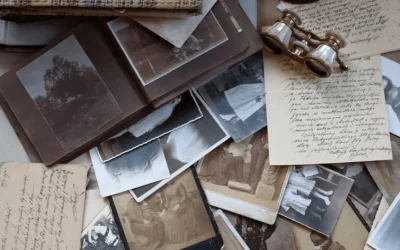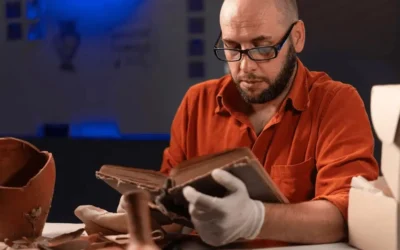Collection Analysis for Archives—Thought Starters
Margot Note
Collection analysis is a process that helps clarify the archival repository’s goals in the context of its mission and budget, supplies data used to set collecting and funding priorities, and builds a base for long-range planning and administration.
The assessment provides a snapshot of what an archival collection looks like at any time, measuring it against a set of objective categories and criteria. It’s a time-consuming process, which is why it isn’t undertaken that frequently.
Collection analysis is both quantitative and qualitative. Collections are enumerated, which results in data regarding cataloged units, size of collections, date spans, and other information. The analysis of those findings is qualitative and gives the archives a sense of both broad and detailed subjects it collects. Not only do archivists review categories, but they also subdivide major subjects into facets to determine whether the categories represent real-world subjects of importance to the archival repository.
Collection analysis is a top-down approach, starting with the overall repository holdings and dividing them into units for analysis. You end up with data at a finer level of granularity; how fine depends on how archivists designed the analysis. It’s often undertaken as an early step in a larger process, such as documentation strategy, where the repository needs to know what is has before planning strategy moves forward.
Descriptive, Not Prescriptive
Collection analysis is descriptive, not prescriptive. From there, you must figure out where you are going. Just because archives are weak in a specific area doesn’t mean they should actively seek collections in that area. Archives may use the information gained from collection analysis to reevaluate existing collecting policies and design future strategies.
Collection analysis can help a repository understand its current holdings so that future collecting reflects conscious decisions based on accurate information. Repositories thus use activities like collection analysis to reevaluate their collecting policies and set priorities for more short-term collecting efforts that are consistent with the overall policy.
Beyond deciding on topics, archivists must think about the level at which to collect. Not everything will be pursued with the same level of intensity. Archivists can, for example, decide to collect on a topic through summary documentation, records sufficient to document a basic chronology, or more comprehensive documentation. Archives may also say that they will solicit, passively accept materials, or reject offers based on their analysis.
To Collect or Not Collect
Once it’s understood what’s in a collection, archivists can figure out what they wish to collect or not collect. For example, what’s the archives’ statement of purpose? The archives should be clear on its role within the larger institution’s mission. The general institution policy is often not appropriate or reflective of the archives’ goals. What are the types of programs supported? Most repositories support research. What about exhibits, publications, and any other outreach programs? Who are the users? Does the archives serve only a scholarly audience or the general public? Is there a primary audience whose needs are the most important? What are the identified strengths and weaknesses of the collection? Does the repository emphasize geographic areas or periods? Topics or languages? Forms of materials? What does the repository not collect? Items outside the collection are often defined in format terms. The bulk of this information can come from collection analysis.
Some institutions have formal or informal agreements with others that would affect decisions. They may have contracts with institutions to help them care for their records. What are the agreements regarding coordination or resource sharing?
Ask yourself about procedures for monitoring and reviewing your findings. There should be a time frame for reviewing what you are doing. Often, short term collecting initiatives have been launched, and the archivists must assess them considering longer-term goals.
Margot Note
Margot Note, archivist, consultant, and author is a guest blogger for Lucidea, provider of ArchivEra, archival collections management software for today’s challenges and tomorrow’s. Read more of Margot’s posts here, and get your free copy of Margot’s brand new book for Lucidea Press, Demystifying Archival Project Management: Five Essentials for Success!
Similar Posts
Texas Archive of the Moving Image: Interview with the Digital Archivist
I recently interviewed Grace Muñoz about her work at the Texas Archive of the Moving Image. Her work on improving the discoverability of the multimedia collection is fascinating.
How to Conduct Comprehensive Archival Surveys
Conducting a comprehensive archival survey is critical to successfully managing archival collections.
Remembering History, Moving Forward Together, with ArchivEra
The Catholic Diocese of Arlington’s Director of Archives selected ArchivEra to manage their collections of historical and cultural significance, and strike a balance between security and access.
Unveiling Archival Impact
The transformative power of storytelling depends upon the strategic choices that top archival performers make and the shift from being record-keepers to change agents.




Leave a Comment
Comments are reviewed and must adhere to our comments policy.
0 Comments